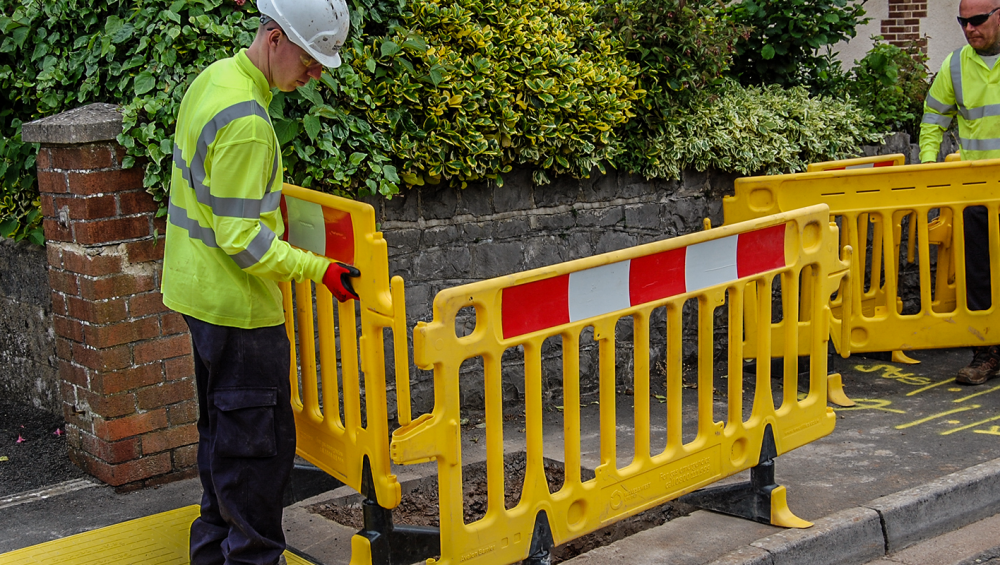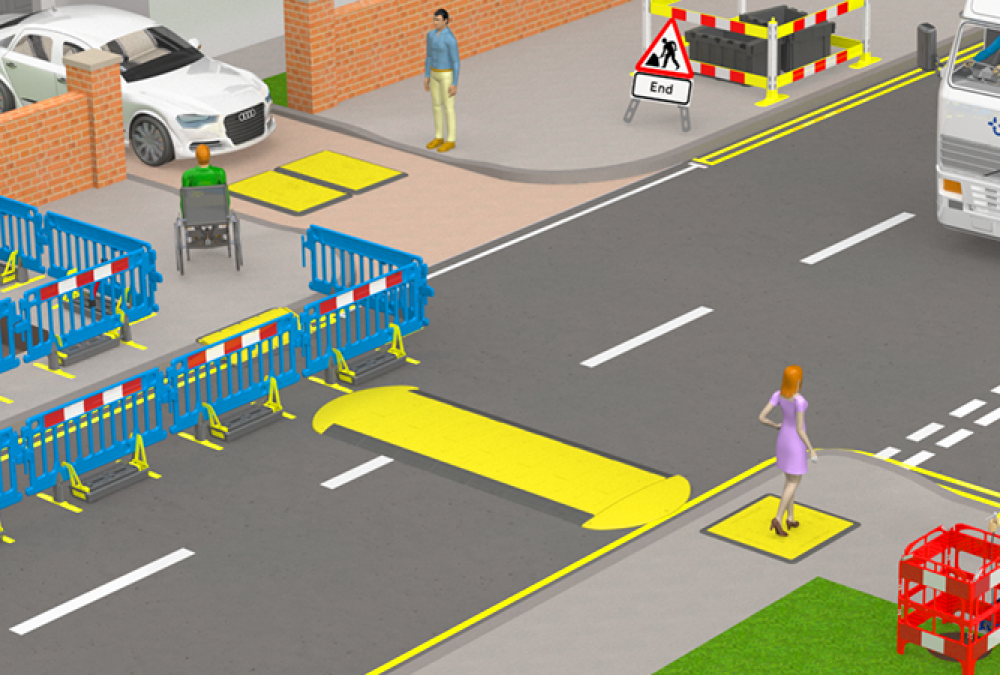Safety at Street Works Code of Practice 101

Not sure what the Safety Street Works Code of Practice is, or just need a refresh? This guide explains what the Safety at Street Works Code of Practice is, who it’s relevant for and how to comply.
What is the Safety at Street Works Code of Practice?
The Safety and Street Works Code of Practice are a series of regulations developed by the UK Department of Transport. It’s also known as the “Red Book” due to its recognisable red cover. The Safety and Street Works Code of Practice is used to ensure safe practices are carried out on street works and road works across the UK.
The Safety at Street Works Code of Practice first came into force in 2013 in replacement of the New Roads and Street Works Act 1991. The purpose of the Code of Practice is to keep pedestrians, road users and the workforce safe while roadworks are carried out.
The code is applicable to all highways and roads in the UK, with the exception of dual carriageways and motorways. The legislation covers the following elements;
- Basic principle
- Operations
- Equipment
- Vehicles
The Code of Practice explains the way work should be laid out, how the equipment should be used, and what types of equipment are compliant. The “Red Book” should be referred to throughout the works, from the planning stage, right through to the project’s completion.
Since 2020, the Highways Authority and Utilities Committee (HAUC) have developed an app which includes all the guidance in the Street Works Code of Practice as well as helpful updates and checklists to make it easier for workers to access and search the “Red Book” for information.
Who does the Safety at Street Works Code of Practice apply to?
The Code of Practice is relevant for anyone who carries out works on the road, such as;
- Highways authorities
- Utility companies
- Private companies
- Supervisors or managers
- General workers
How to comply with the Safety at Street Works Code of Practice
It is the joint responsibility of everyone on the site to behave safely. The code lays out the main principles you need to follow when signing, lighting and guarding works on all roads, including the carriageway, footway and verge. To comply with the legislation, it’s important to always refer back to the guidance over every stage of the work. If there is anything you aren’t sure of you should ask the competent person, usually the supervisor or manager, as they may need to contact the relevant highway authority to decide on the safest method of working.
Is my equipment compliant?
Here at Oxford Plastics, our products are designed with compliance in mind. Our equipment is hardwearing, repairable and easy to clean with long-lasting colours and visibility inserts to ensure your site can be seen.
Signage
The Safety at Streetworks Code of Practice outlines that signs and cones must be reflective, except for any parts coloured black. The retroreflective sleeves of the cones must be kept clean, and damaged cones should not be used.
HighwayMan Cone System

The HighwayMan Cone system is fully Chapter 8, “Red Book” and British standard compliant.
Pedestrian Barriers
The Safety at Streetworks Code of Practice lays out that pedestrian barriers must have a handrail fixed between 1 and 1.2 metres above ground level, along with a visibility strip at a minimum of 150mm depth at least 0.9m from ground level and a tapping rail with a minimum depth of 150mm and a lower edge at ground level or set at up to 200mm above ground level.
Barriers should be joined together to form a continuous barrier around the working space and should be assembled in a way that avoids tampering. The barriers should also be able to withstand the wind force of 8.7m/s in England and 17.6m/s in Scotland. This can be achieved through the use of ballasts.
Avalon Chapter 8 Barrier

The Avalon Chapter 8 Barrier is fully Red Book compliant and anti tamper. It’s also compatible with ballast trays and blocks which provide additional wind resistance.
Other compliant barrier and fence systems include the StrongFence and StrongWall Barriers and the SafeGate.
Ramps
When pedestrians are diverted to temporary walkways, ramps must be provided to ensure that wheelchair users and people using pushchairs or mobility scooters are able to negotiate the kerb safely. Key points for compliance include;
- Ramps must be at least 1m wide, and preferably 1.2m wide if space allows.
- Materials should be strong enough to support pedestrians, wheelchair users and mobility scooters.
- The surface should be slip-resistant to prevent slips and falls.
- The ramp should slope gently enough for wheelchair users to mount the kerb easily and avoid grounding mobility scooters with long wheelbases.
- Allow for rain to run along the gutter.
Footway Boards and Road Plates
The Safety at Street Works guidance explains that footway boards must be used to maintain foot and light vehicle access during excavation works, they cannot be used on the carriageway and should be used for bridging excavations. To be fully compliant the boards must have the following characteristics.
- Must cover the full width of any temporary footway.
- Must be strong enough to support pedestrians, wheelchair users, mobility scooters, bicycles and where necessary light vehicle access.
- Must be made from material which will not become distorted.
- Must be slip resistant.
- Must have chamfered edges.
- Must be rigidly fixed with enough length on each side of the excavation to provide the necessary support. On non-bitumastic surfaces, bitumastic materials should be avoided as to prevent the surface material from being affected.
- Must only be used when the sides of the excavation are supported and stable.
- Must be fenced when the edges of the boards are adjacent to an excavation.
Road plates must be made of suitable materials with a skid proof surface, like footway boards, the sides of the excavation must be suitably supported beneath the road plates. The road plates should be suitably signposted if they exceed 15mm in height. Again, like footway plates should have chamfered edges.
LowPro Road Plates and Trench Covers

The LowPro range of road plates and trench covers are designed to replace steel plates and wooden boards. The range is easy to use and implement, as well as fully compliant with the Street Works Code of Practice.
Here at Oxford Plastics, safety and compliance are of the upmost importance. Our products are designed to minimize the risk of harm to pedestrians, workers and vehicle users alike. Our range of safety products is intelligently designed to help you adhere to the latest health and safety compliance. For the full list of Chapter 8 and Red Book compliant products, read our guide. Want to find out more about how Oxford Plastics can help you? Get in touch with our team of friendly experts today.
Related News

An Industry Guide to LowPro Road Plates and Trench Covers
Across construction and utilities in gas energy, waste-water, water suppy and fibreoptic works, keeping people safe and sites...

What are the risks of slips trips and falls on a works site
Working on a construction site, it can be challenging to reduce the risks of slips, trips and falls that arise due to wet and...

5 road works safety challenges and how to solve them
Safety is paramount when working on highways and street works. Ensuring operatives and the public are safe and that road user...